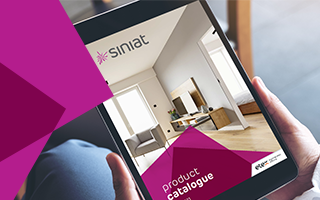During the longer days of the summer months, the impact of glancing light becomes more apparent when home owners get to see their beautiful interiors bathed in the natural light of our summer evenings. And, their once-smooth walls take on a life of their own providing a terrain that any mountain-biker would relish.
That’s perhaps an extreme take on the issue but glancing light is certainly something to consider when designing a room and deciding on the final finish of your interior, or exterior walls.
Glancing light is a phenomenon where light hits a wall and highlights any imperfections that may be there, causing shadows to appear and often unsightly lumps and bumps that, at all other times, are not visible.
Some of the biggest culprits that cause this are windows that go all the way to the edge of a wall, non-recessed lighting without a shade to diffuse it, and the installation of plasterboard sheets in a vertical rather than horizontal orientation.
To minimise the effects of glancing light, taking into consideration the placement of windows and light fittings during the design process is vital. Knowing the aspect of your building combined with the angle of the sun throughout the day can help to minimise this issue.
Different types of lighting can have varying results on how good, or otherwise, your walls look at different times of day. Recessed downlights cause the least amount of glancing light as they don’t shine directly onto walls. However, placing your downlights on the edge of the ceiling so that they shine down the wall will highlight any imperfections.
The finish on your walls is also an important consideration in the design and construction process. Firstly, minimising joints by using the largest available plasterboard sheets for your build creates fewer joints and less opportunity for differences in surface area on the wall. And, installing them horizontally rather than vertically reduces the opportunity for light to cast across the joints.
When it comes to the finish prior to painting, a Level 4 finish is considered adequate for surfaces that will be coated in a matt finish. For a premium surface, and where darker colours, a semi-gloss or gloss coat will be used, your walls need a Level 5 finish, which includes the benefit of a skim coat to even out the joints and plasterboard sheets and create an even level of absorption across the different areas of the wall.
Even the most skilled of tradespeople can’t create a completely flat surface but, by thinking ahead to your window, lighting and window treatment considerations you can minimise the effects to almost nothing and create the magical illusion of a home free from imperfections.
For more information about wall and surface preparation to minimise the impact of glancing light, download our fact sheet https://bit.ly/2D1CTQd







